1.4 - particles + antiparticles
1/42
There's no tags or description
Looks like no tags are added yet.
Name | Mastery | Learn | Test | Matching | Spaced |
|---|
No study sessions yet.
43 Terms
what is antimatter?
matter that has the same properties of the matter particle, but with an opposite charge
matter vs antimatter
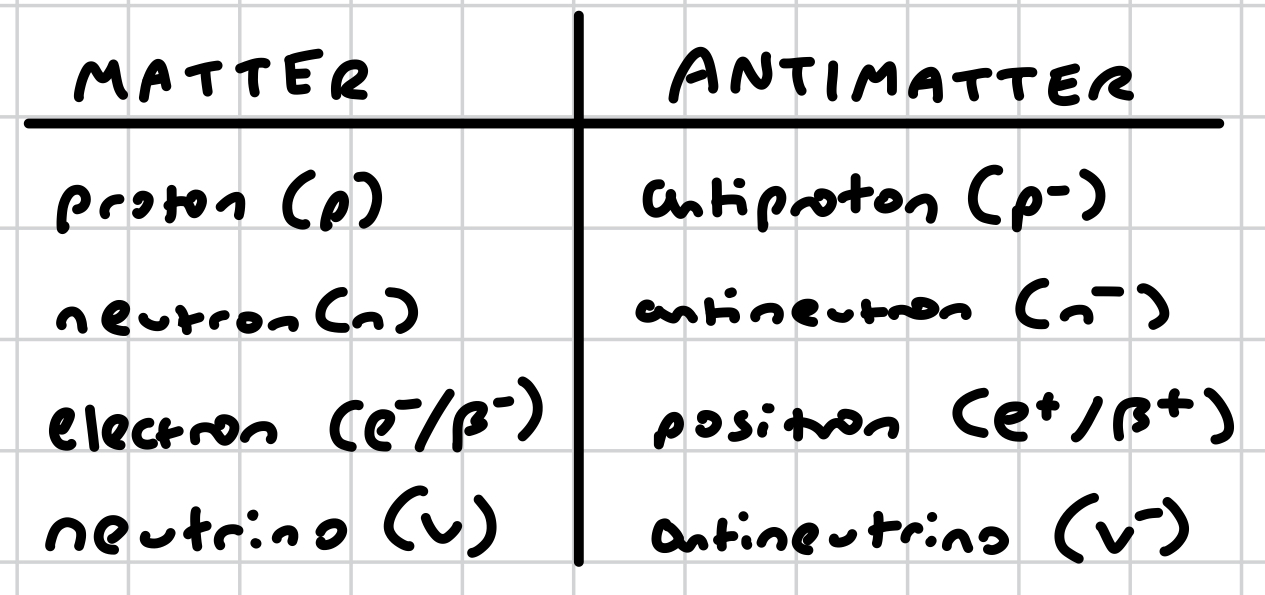
positron emission
unstable nucleus has a balanced charge but an excess of protons
a proton turns into a neutron. the nucleons are balanced but charge is now -1
a positron of charge +1 is created, balancing the charge. the remaining energy / charge is emitted through a neutrino
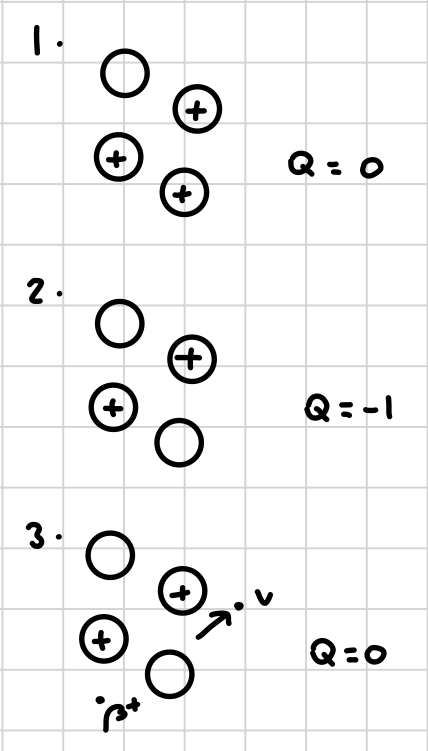
when does positron emission happen?
when a unstable nucleus has a balanced charge but an excess of protons
is positron emission proton → neutron, or neutron → proton?
proton → neutron
what’s the difference between positron emission and β- decay?
positron emission - proton → neutron
β- decay - neutron → proton
what are the products of positron emission?
positron and neutrino
is positron emission a neutrino or antineutrino?
neutrino
what is the purpose of the positron in positron emission?
to balance charge
what is the purpose of the neutron in positron emission?
to emit the excess charge and energy
positron emission general equation

is positron emission naturally occuring?
nah
how do we manufacture a positron-emitting isotope?
by placing a stable isotope (liquid or solid form) in the path of a beam of protons, some of the nuclei in the substance absorb extra protons and become unstable positron-emitters
for every particle, there’s a corresponding antiparticle that …
annihilates both the particle and anti-particle, converting their total mass to photons
has the exact same rest-mass as the particle
has exactly opposite charge to the particle (if the particle has a charge)
particle-antiparticle similarities and differences
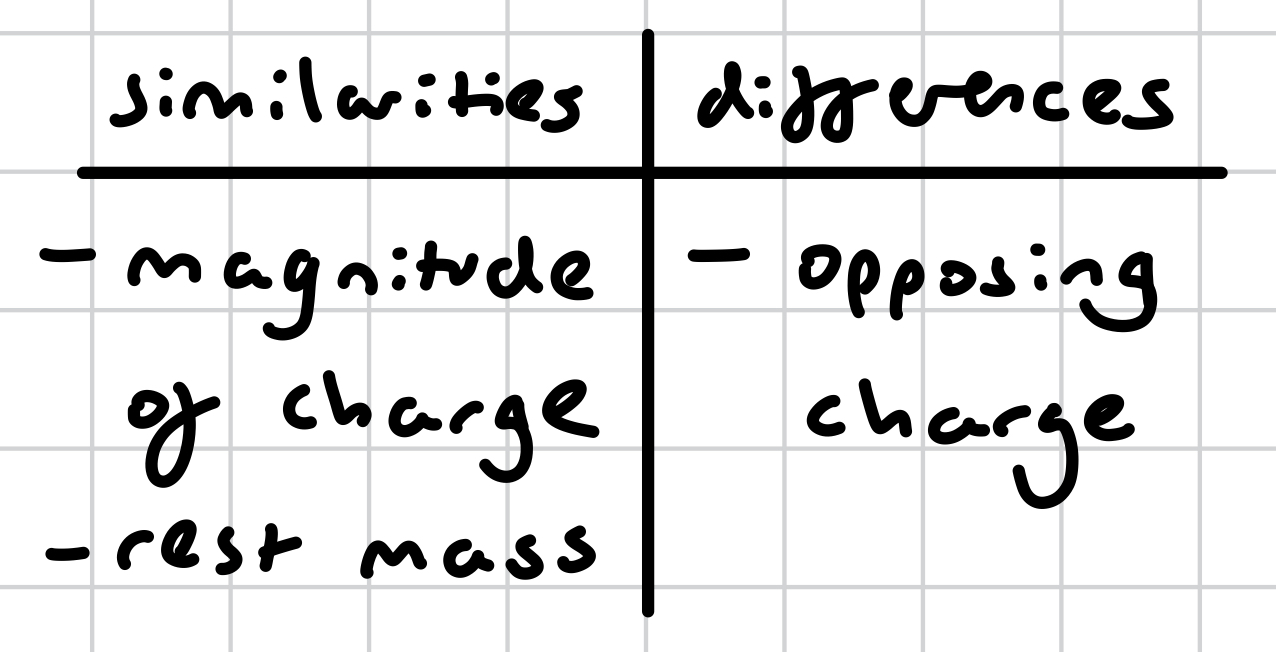
what does E = mc2 mean?
E = mc2
E = rest energy
m = rest mass
c = speed of light in a vacuum, 3.0 × 108
the mass of an object when stationary (rest mass, m0) corresponds to the energy of an object when stationary (rest energy, E0) locked up as mass (m0c2)
what is rest mass?
the mass of an object when stationary
what is rest energy?
the energy of an object when stationary?
what must be conserved in the conservation of energy?
rest energy
what must be conserved in the conservation of mass?
rest mass
what did dirac theorise about the existence of antimatter?
that antimatter would unlock rest energy when a particle-antiparticle pair meet and annihilate each other
what unit is the energy of particles / antiparticles expressed in?
millions of electron volts, mega electron volts (MeV)
1 MeV = ?
1.60 × 10-13 J
what is 1 electron volt?
the energy transferred when an electron is moved through a potential difference of 1 volt
what is the rest energy of a proton / antiproton?
938 MeV
what is the rest energy of a neutron / antineutron?
939 MeV
what is the rest energy of an electron / positron?
0.511 MeV
what is the rest energy of a neutrino / antineutrino?
0 MeV, because neutrinos have no charge
what is annihilation?
a particle and corresponding antiparticle meet, destroying each other. their mass is converted into radiation energy released as photon

what happens to the total mass of the particle and antiparticle in annihilation?
it’s converted into radiation energy and released as photons
how many photons are produced in annihilation? why?
2 photons, since momentum cannot be conserved by a single photon, therefore 2 are fired in opposite directions. while more technically could be produced (as long as it’s an even number), it would be difficult to conserve everything (momentum, charge. strangeness, etc) so it’s safe to say only 2 are produced
minimum energy of each photon produced in annihilation
E0 = hfmin
E0 - minimum energy of each photon produced
h - planck’s constant, 6.63 × 10-34
f - frequency (of photon?)
‘min’ refers to ‘hf’ as a whole, and how it is the minimum energy
pair production
a photon creates a particle-antiparticle pair, vanishing in the process, when it is close to a nucleus
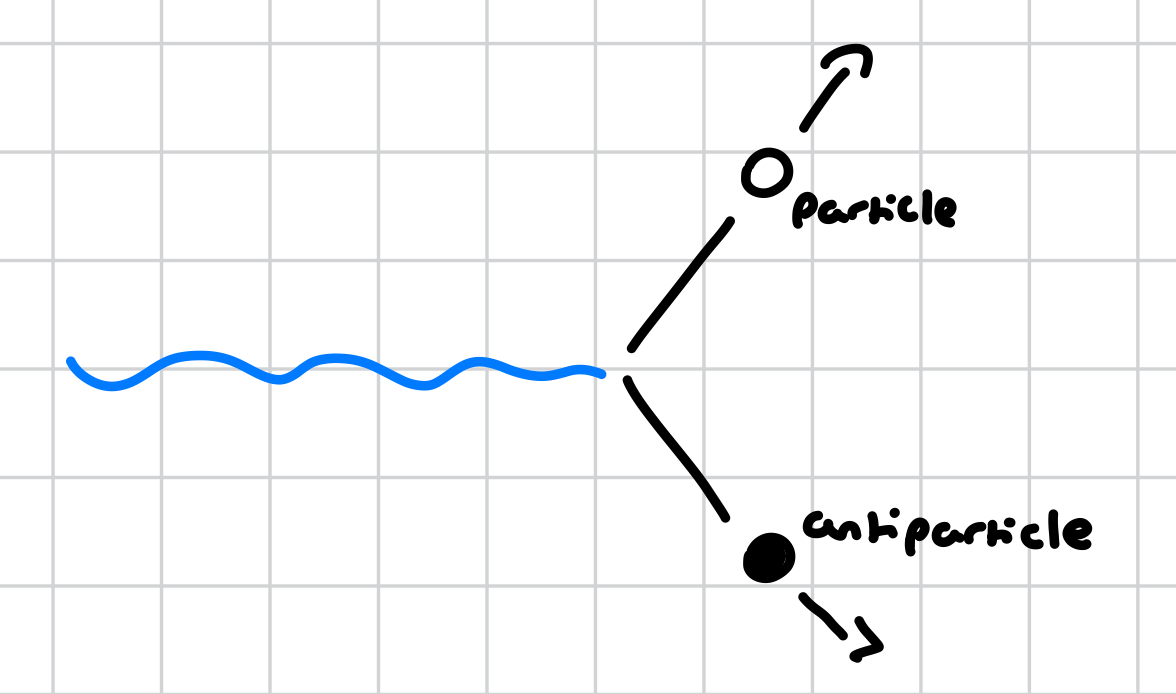
what happens to the photon in pair production?
vanishes in the process
under what circumstances does pair production happen?
when a photon comes close to a nucleus
why does pair production require a nucleus?
a photon cannot simultaneously conserve energy and momentum when transforming into a particle-antiparticle pair, so the presence of a nucleus allows for energy or momentum to be absorbed either way for full conservation
according to a feynman diagram, there must be an interaction between a photon and something
minimum energy of a photon needed for pair production
2E0 = hfmin
E0 - minimum energy of a photon required to overcome the 2 rest energies of the particle-antiparticle pair
h - planck’s constant, 6.63 × 10-34
f - frequency (of photon?)
what is the difference between the minimum energy required for annihilation and the minimum energy required for pair production?
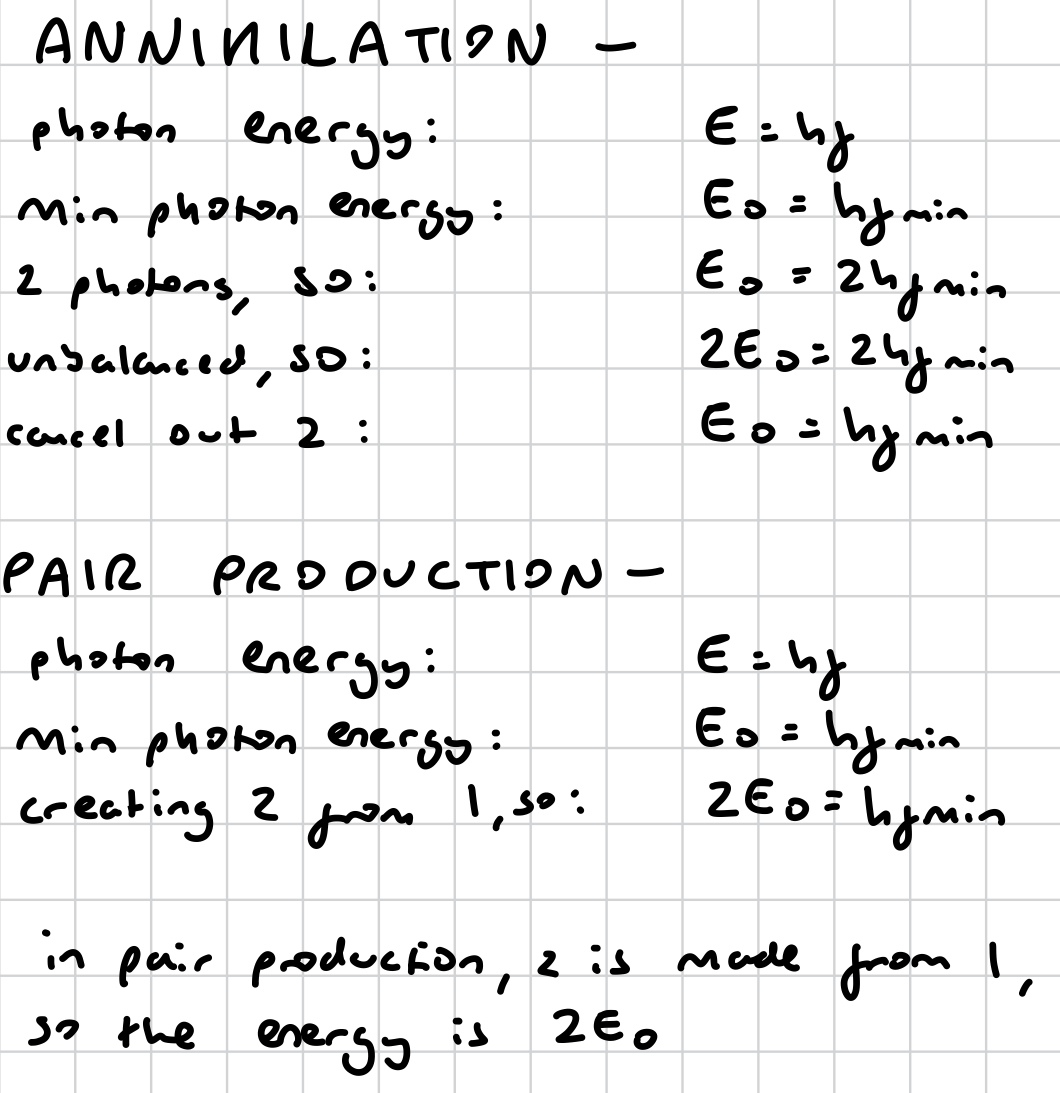
WHOLE THING ABOUT WHAT IS THE FREQUENCY OF A PHOTON/ PARTICLE AND HOW DOES IT MANIFEST ITSELF, ONCE I FIGURE IT OUT
in pair production, what actually is the E0 of the photon?
the energy required by the photon to overcome the 2 rest energies of the particle-antiparticle pair
in pair production, what happens if a photon doesn’t have enough energy to overcome 2 rest energies?
pair production will not occur as a pair will not be made. it must be a particle-antiparticle pair, so 2 rest energies must be overcome
why does pair production happen?
why must a particle-antiparticle pair be made in pair production as opposed to just a single matter?